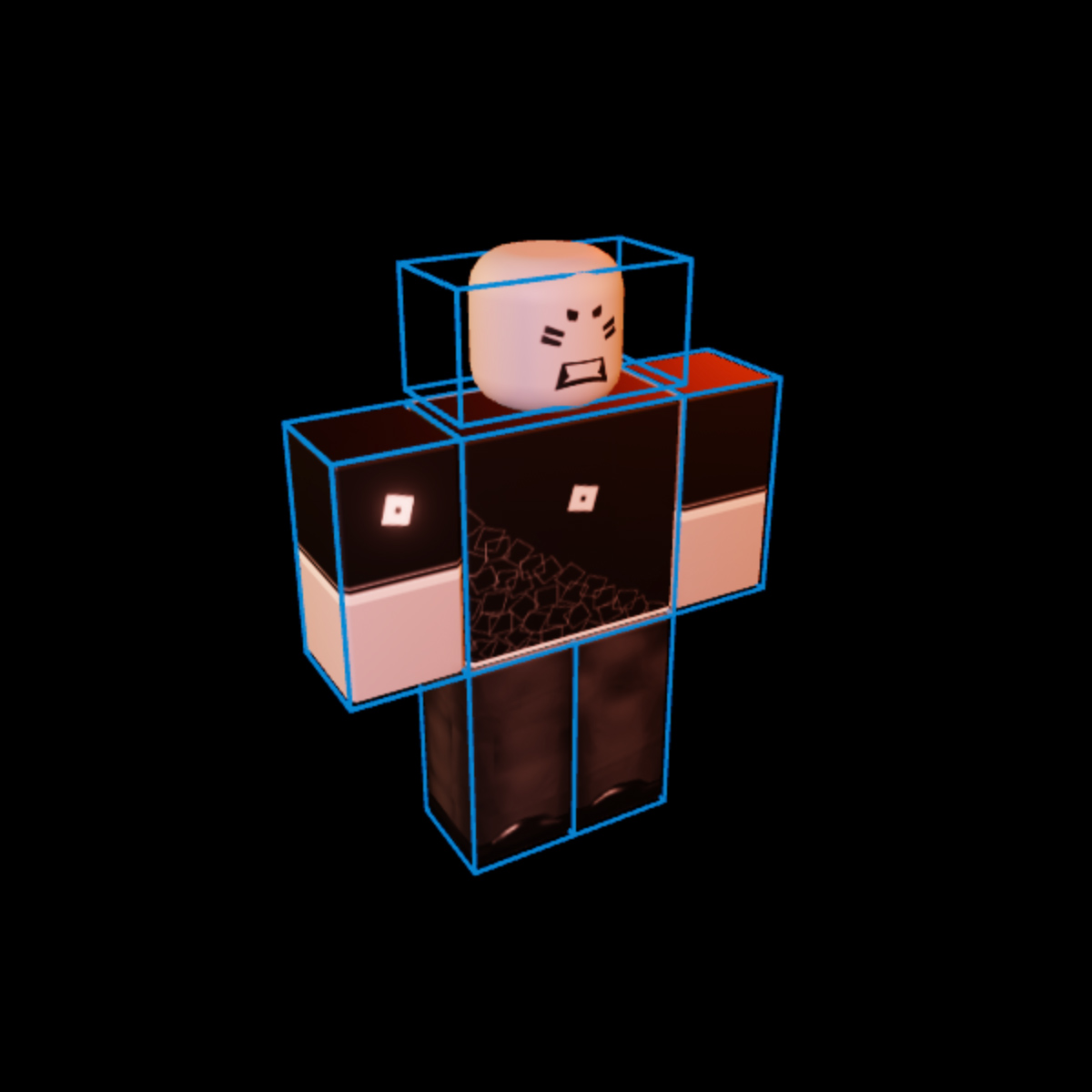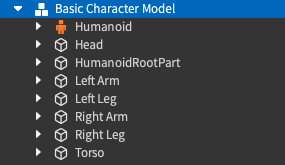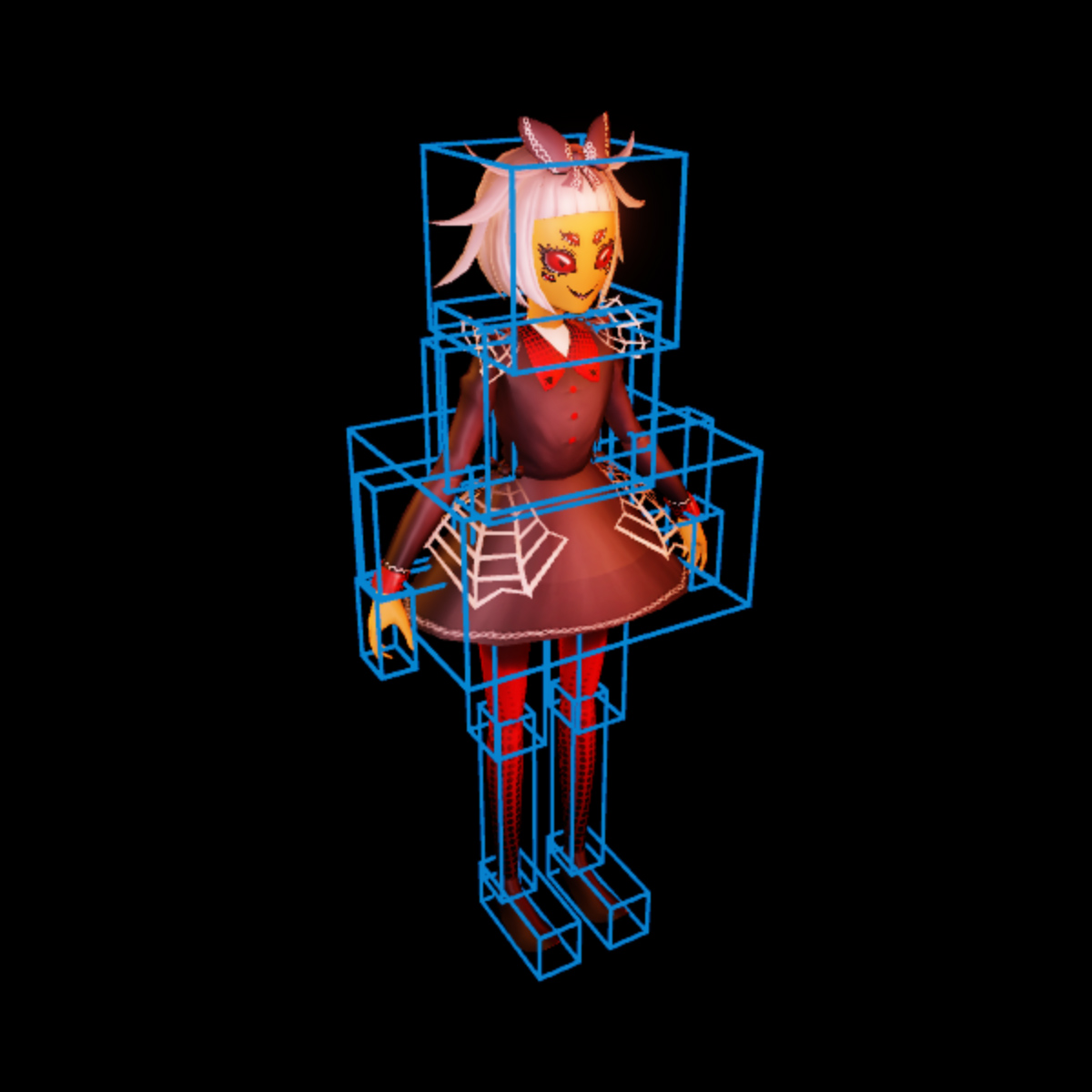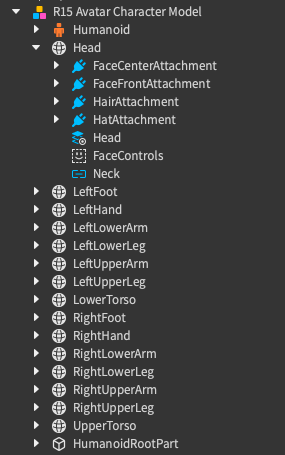Characters typically refer to any Model objects that interact with the world or other users. While a character can be as simple as a glowing sphere that communicates and interacts with users, characters are often human-like models with additional means of expression to encourage immersion and realism.
Characters can range between basic characters, such as a simple non-player character (NPC), or avatar characters, which are user-controlled models that include advanced features for movement, animation, and cosmetics.
All Roblox users are associated with an account-based avatar character. Along with this avatar character, Roblox represents users as players in the data model, giving developers access to additional character customization properties, social features, and relevant gameplay and account information. For more information on account specific player features, see Players.
Basic Characters
Basic characters are often used as NPCs and typically perform one or two simple tasks. A common component of basic characters include a display name, health, and basic movement.
You can use the following components within your Model object to enable these basic features:
- A group of parts, or assembly, that includes the following:
- A collection with the name HumanoidRootPart to indicate the root part of the assembly.
- A part with the name Head to display a display name over.
- Additional parts that make up the cosmetic individual body parts, which commonly include the 6 (R6) or 15 (R15) body parts used for human-like models.
- A Humanoid instance to quickly add common character properties to a model.


With these components, the character model displays a Humanoid.DisplayName, has health, and can move with Humanoid.Move(). For more information on additional configurations of the display and health elements, see Name/Health Display.
Avatar Characters
Avatar characters use a standardized set of character components that allow you to use body and facial animations, and equip clothing and accessories. By standardizing the components, all avatar character models can access these features, whether they are controlled by a player or an NPC.
By default, all users join experiences as their saved Roblox avatar, which already includes all the components for an avatar character. A complete avatar character has the following components in their Model:
- An assembly of MeshPart objects, that includes the following:
- A part with the name HumanoidRootPart to indicate the root part of the assembly.
- A part with the name Head to display a display name over.
- Additional parts that make up the cosmetic individual body parts, that must include the standard 15 body parts used for R15 human-like models.
- A Humanoid instance to implement and access common character properties.
- WrapLayer objects for each of your model's body parts, to enable it to wear clothing and other layerable cosmetics.
- FaceControls to enable facial expressions and poses for your character's head.
- Attachment objects for each of the standard attachment points on the character body.


For information on modifying and customizing existing characters in your experience, see Character Appearance.